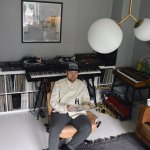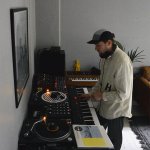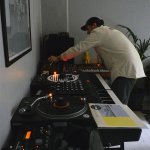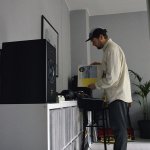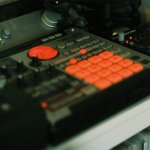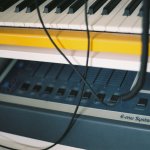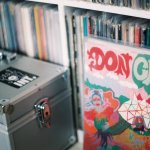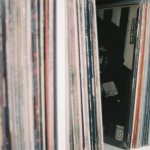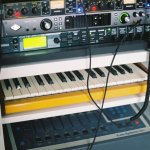Show Off Your Studio: Ol’ Burger Beats’ soulful home studio
The Norwegian hip-hop producer invites us into his apartment studio, where he displays a thoughtful passion for vinyl, samplers and culture.
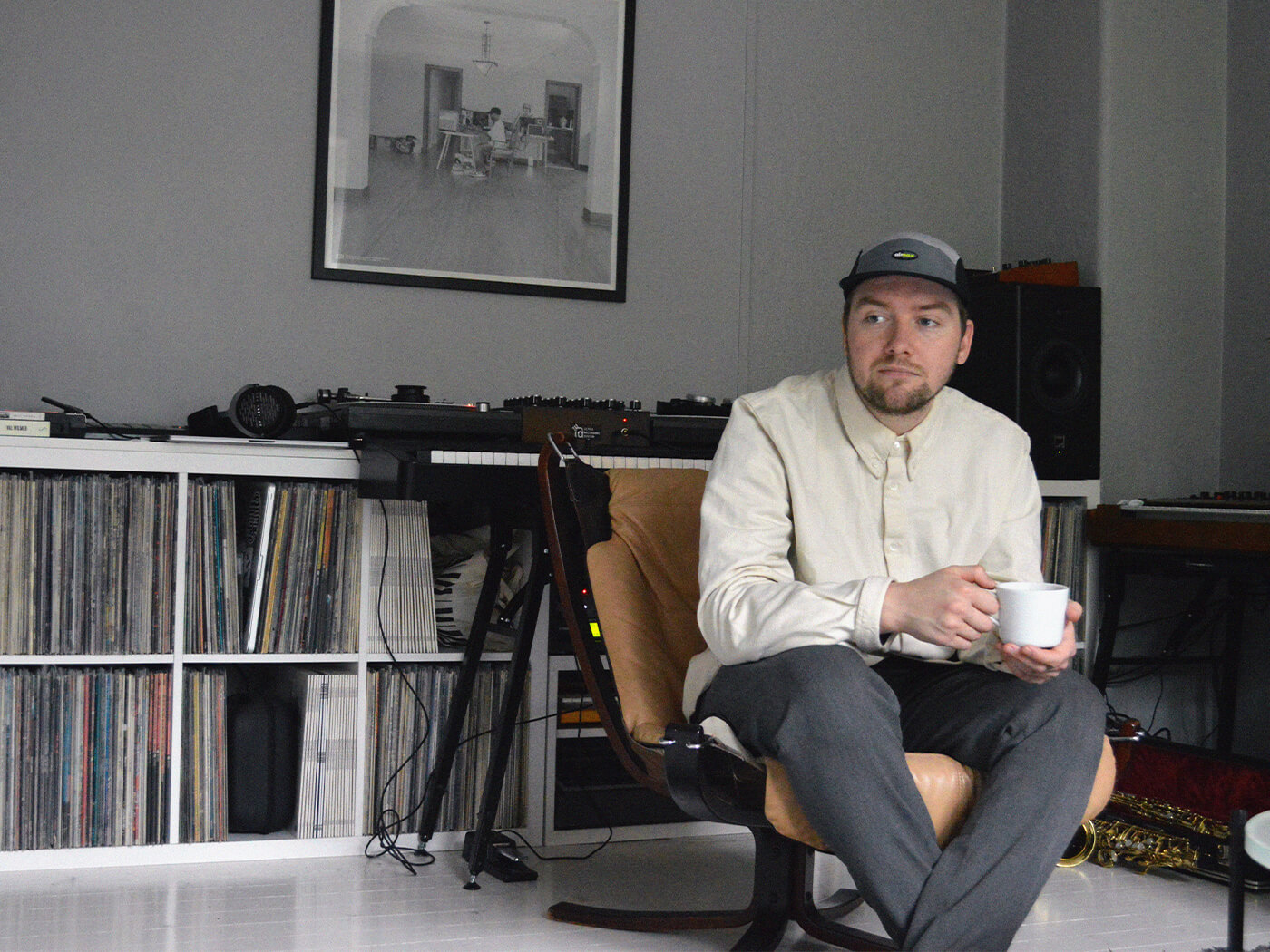
Artist Ole-Birger Neergård / Ol’ Burger Beats
Website olburgerbeats.bandcamp.com
Photos Lisana Preteni
Key Kit
- Alpha Recording System Model 9000 Mixer
- Technics SL-1210 MK2 Turntables
- Universal Audio Apollo x6
- Apple MacBook Pro
- Akai MPD18
- Roland FP-4
How do you use your studio, Ole-Birger?
I mainly work with audio samples from vinyl, so my studio is built around the two turntables and the analogue rotary mixer. Crate digging and finding samples in my local record stores sparks my creativity the most, so I spend a lot of time listening to records when I’m not producing. There are synthesisers in my studio as well, and although my music is not filled with synth sounds everywhere, they also keep me inspired.
I use different samplers, pedals and effect boxes to colour the sound of the samples and synthesisers before they enter my DAW. My microphones are not used too often, but I record some percussion or my own saxophone playing from time to time, and use them to create vocal sketches every time I have a rapper or singer in the studio. Some of my favourite gear is also located at my parents’ home, where I have Wurlitzer 200A and Fender Rhodes 73 Mark 1 electric pianos. So I try to record some piano samples every time I’m visiting my folks.
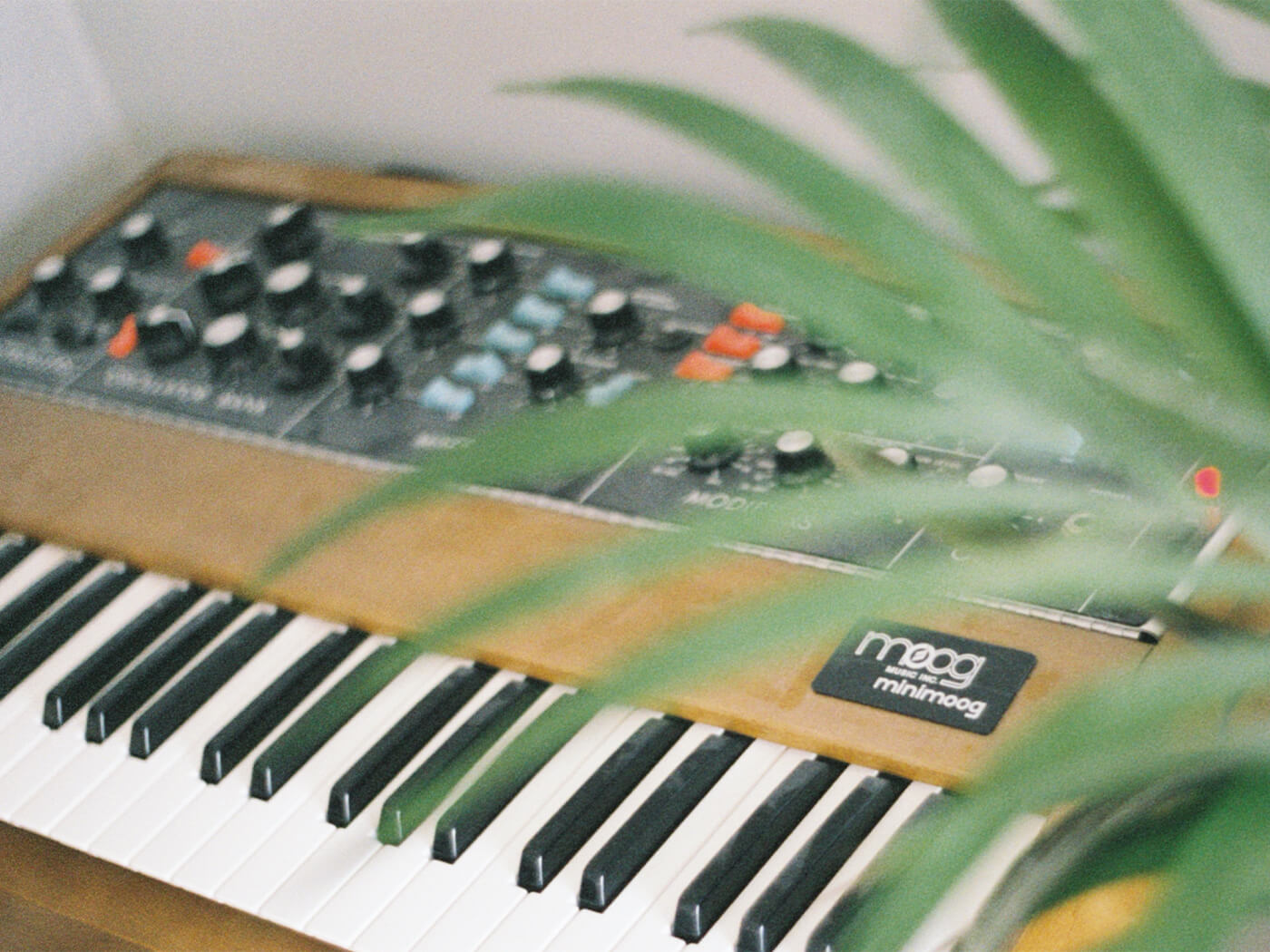
Tell us more about the studio!
My home studio is located in the living room of my apartment, just outside of the Grünerløkka area in Oslo. I have been in Oslo for seven years, and my girlfriend and I have lived in this place for the last three years. The studio is focused on one wall of the room, but there are records and music equipment all over the place. For example, I keep my instrumental hip-hop records in the bedroom! I have a day job as an interaction designer at NRK Radio (the Norwegian radio broadcaster), so the time I have for music production is kind of limited. That’s why it’s really important for me to have my main studio at home, so I can use what’s left of my day to make music instead of travelling from one place to another. I also try to keep every audio source plugged in to my mixer at all times, so I can spend my time creating instead of rewiring and organizing when I’m in the studio.
You have a few samplers in your set-up – how are you using them?
Yes, I currently have an E-mu SP-12 Turbo, an Akai MPC 2000, the Roland SP-555 and a half-broken SP-303. I think it’s really inspiring having these legendary machines around me, it reminds me of the producers that I have listened to growing up. Nowadays I mostly use the SP-555 for compression or applying a certain texture or warmth to the samples; I rarely make entire productions in the box. My favourite of these instruments is probably the SP-12, because of the iconic 12-bit sound, the way it transforms the sound and changes the overtones of everything you load into it. I love the design of it as well. I like the workflow best on the MPCs, though I do most of the sequencing with my MPD18 and computer.
Can you tell us about the Moogerfoogers?
I have four Moog Moogerfoogers in my setup right now. I mostly use them for my synthesisers and electric pianos but have used them for vinyl samples as well. I have two MF-104Z Analog Delay pedals for stereo delay, and I got the MF-102 Ring Modulator to try and emulate the overtones of the SP-12 without compromising the audio quality or the sample length. It sounds pretty good! I also have the MF-101 Low Pass Filter pedal that I’m planning to use for my electric pianos. Most of the time I connect them through the effects sends on my mixer.
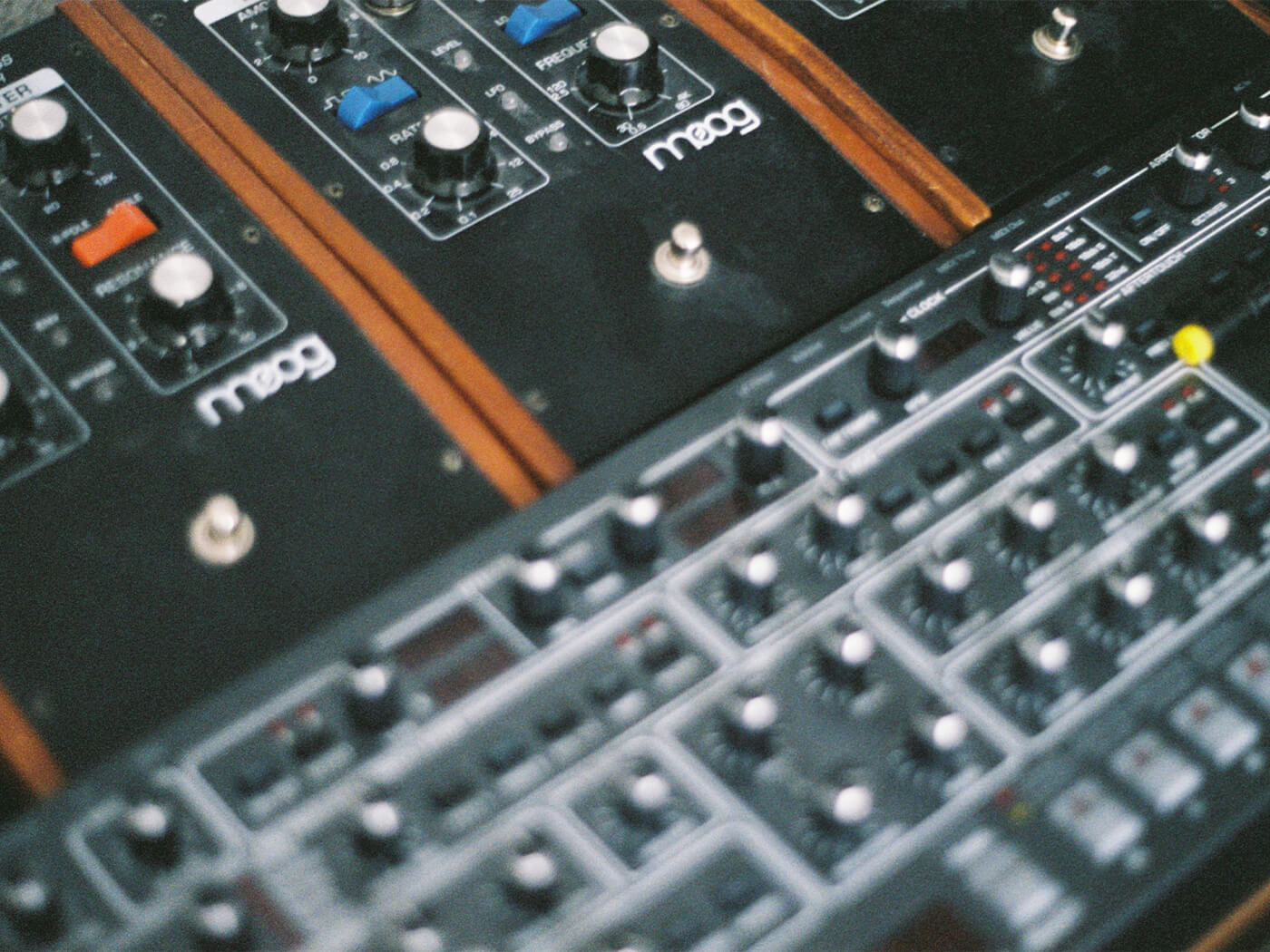
Which DAW do you use?
I started working in Cubase around ten years ago, and now I know my way around that software so well that it’s really easy to be creative and get work done. I try to do as much work as possible outside of my computer, so I guess it doesn’t matter much what software I’m using anyway. It’s also very good for working with Elektron products – the Overbridge software has worked well in Cubase for me. The real-time rendering option is great in Cubase too, it lets me run things through hardware equipment like the Analog Heat when I’m exporting my tracks.
What’s your general approach to sampling?
I sample vinyl records most of the time – I’m always browsing Discogs and my local stores for rare albums that I’m looking for. I often look for early 70s jazz and soul records, often electric piano sounds alongside some sort of percussive texture. The texture, grain or dust is what I love so much about sampling. I find it difficult to get that without going through record bins. But lately, I’ve been sampling my own recordings more often. I’ve recorded Fender Rhodes and Wurlitzer samples to cassette at my parents’ house through a couple of my analogue effects, before blending that with spiritual jazz percussion samples to create the same texture that I’m looking for in other sample sources. Then I’ve been treating those samples the same way I would work with a vinyl sample.
The cassette medium seems to give the samples some of the same character as the vinyl medium, and I have a pretty good Technics tape player that’s connected to my DJ mixer the same way my turntables are. That way I can use the isolators and get that warm sound of the ARS mixer. I’m working on a full album based on that ‘electric-piano-tape-samples recipe’ and it sounds pretty good, I’m very excited to share it with everyone.
How are you keeping inspired during coronavirus lockdown?
I’ve been very lucky to keep my design job throughout the lockdown, and since I have my studio at home, I had no plans of leaving the house anyway! Thanks to that cassette sample project I have been as inspired as I’ve ever been. I’m finishing up three or four new projects as we speak, and I just released All Yours with Vuyo (listen below). Earlier this Spring me and Kjartan Gaulfossen put out the Tidagersvarselet/Hver gang når album, and I’m putting out the instrumental version of that on 26 June. So having a lot of different albums in the works keeps me motivated if one of the projects is slowing down.
How did you go about getting the acoustics right in the studio?
The acoustics are not right in my studio at all actually. Since the studio doubles as my living room, I just try to make the most out of the limited space I have. I also do a lot of the mixing with my headphones and I think that’s how most of my listeners are playing my music too. Nowadays I use the Grado PS500e for reference listening and playing vinyl, and the Beyerdynamic DT 1990 Pro for producing and mixing. The room works fine for recording rap vocals or horns every now and then, but luckily most of the audio I record is line-in signal from turntables, samplers and keyboards.
How much time do you spend in your studio per week?
Usually two or three nights a week and one or two full days in the weekend. In the afternoon it depends on how I feel after work. It can be exhausting to work full-time combined with producing, DJing, shipping out records, answering music-related emails and everything else. But I often just sit down and listen to some records or browse for samples and then if I get inspired I can easily start creating.
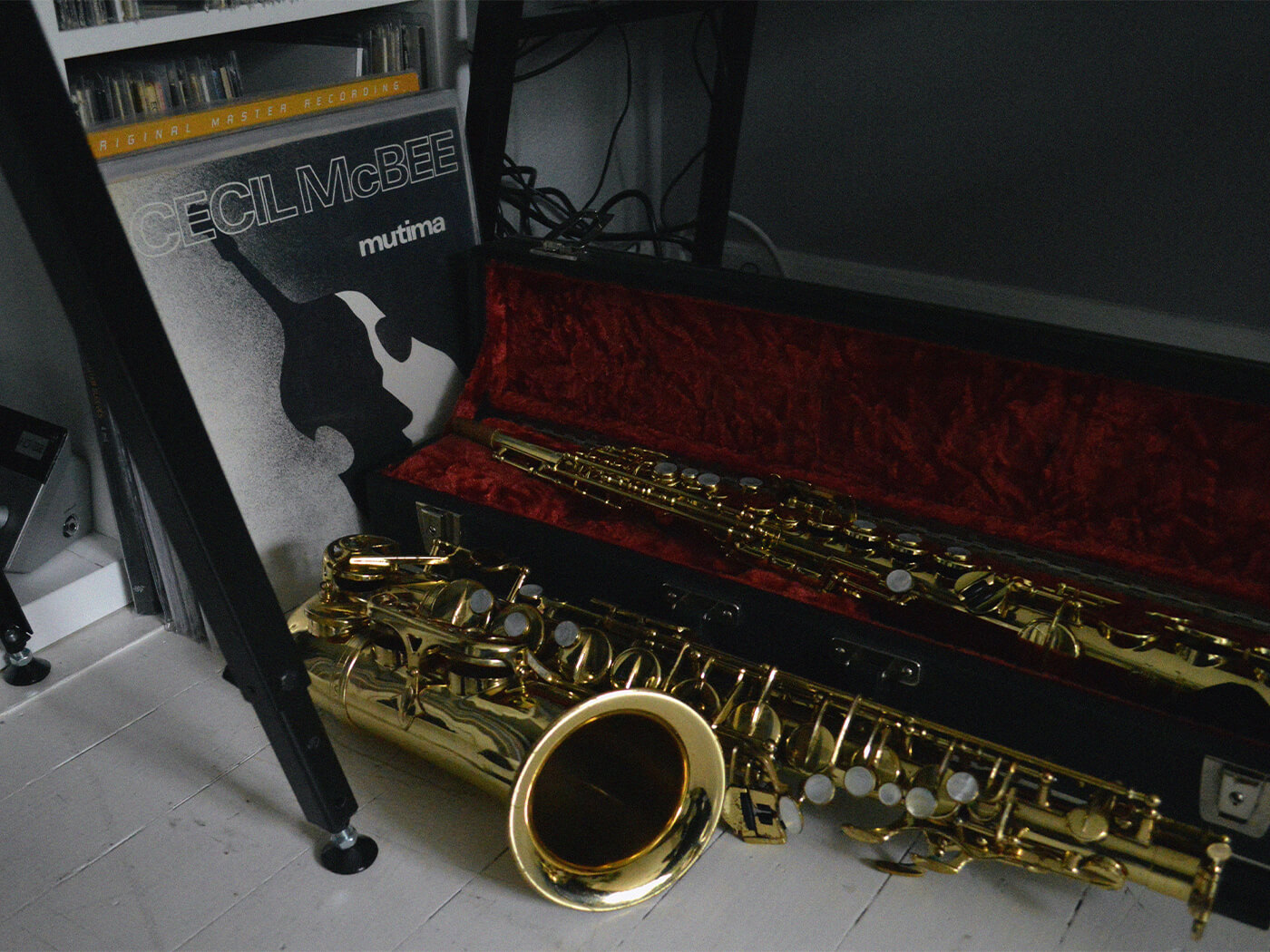 What atmosphere do you try and create in the studio?
What atmosphere do you try and create in the studio?
Aesthetically, I really like wooden instruments like the Minimoog and Sequential synths and I love having lots of record shelves in my studio. I guess it’s a pretty classic underground hip-hop setup with the turntables, records and synths. There’s a J Dilla print on the wall by Raph Rashid – the photographer who made the Behind The Beat books – to remind me of one of my biggest heroes. I also have music books and magazines around to take my eyes off the screen every now and then. I’m very inspired by the 1970s, both musically and visually, so there’s some of that atmosphere in my studio I think. I also try to keep it as clean as possible – I don’t want audio cables and equipment lying around everywhere – though it’s often very dusty.
What is your favourite piece of gear?
Probably my DJ mixer, the Alpha Recording System Model 9000. It’s a hand-built analogue rotary mixer from Japan. I love playing LPs with it, and everything I record through it sounds so warm. The isolators are very good for sampling, the high frequencies are crisp and nuanced and the bass sound is really deep. It’s very loud too, almost too loud for my headphone listening sessions. Plus it looks gorgeous! It was a big investment, but now I’m really glad I got it.
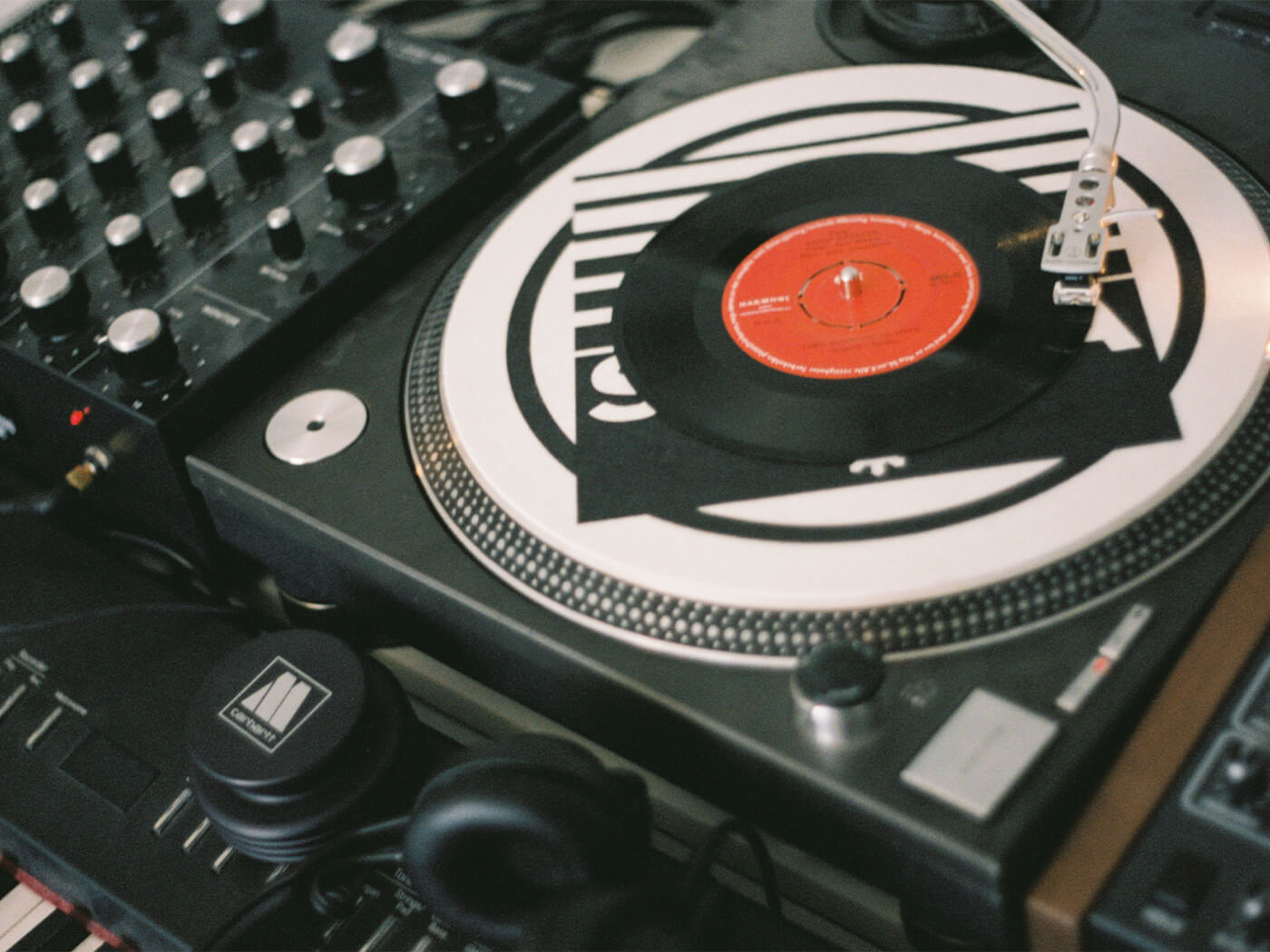
What is next on your shopping list studio-wise?
I’m pretty happy with my set-up right now. Maybe I’ll get some more percussion instruments or learn to play the flute or something, but I’m not rushing for new gear at the moment. I’m always on the lookout for more synthesisers, but I don’t really have space for more. I’ve been buying rack versions of everything now just to save some space.
Do you have any frustrations with your current set-up
I wish I had a dedicated room for the studio, and not just a wall in my living room, mostly because of the acoustics. I wish I had more space available so that I could have all my instruments in one place. But, at the same time, I’m very happy to be able to create music from home, and I’m really glad that my girlfriend is happy with this set-up too. I don’t think that would be the case for everyone!
What is your dream piece of gear?
It’s maybe a little outside of the traditional music gear scope, but I would love to have a lathe cutting machine at home to create limited batches of vinyl records straight from my studio. Maybe alongside a silk-screen printer for creating record sleeves. I’m very inspired by the independent private pressings of 60s and 70s jazz music, so I try to take some of that DIY culture and aesthetic into my own releases.

What album has inspired you the most in your musical career?
I have so many good candidates here; maybe I should go with Quasimoto – The Unseen. This is a true masterpiece by hip-hop producer Madlib and his alter ego, Lord Quas. The beats on this album are all so incredibly left-field and weird, but at the same time soulful and jazzy – in my opinion even genre-defining for independent hip-hop. It’s the rap equivalent of a Sun Ra recording I guess. The high-pitched vocals are great and the lyrics are incredible too, take the track Low Class Conspiracy about police brutality for example. To me, this is one of the most creative rap albums ever and it never stops inspiring me. Released on Stones Throw Records, my all-time favourite hip-hop label too.
Do you have a new particular album or artist that is inspiring you right now?
I’ve mostly been listening to jazz for the last few years. A lot of spiritual jazz on labels like Strata-East, Black Jazz, Impulse! and Tribe, to name a few. Speaking of Sun Ra and Quasimoto, I’m going through a little Sun Ra phase too right now, reading a few books about him and trying to get hold of more records from his catalogue. It’s all linked to my own projects, especially the one where I’m sampling my own Wurly and Rhodes recordings, so I’m trying to collect inspiration, knowledge and sounds that I can try and translate to my own musical expression.
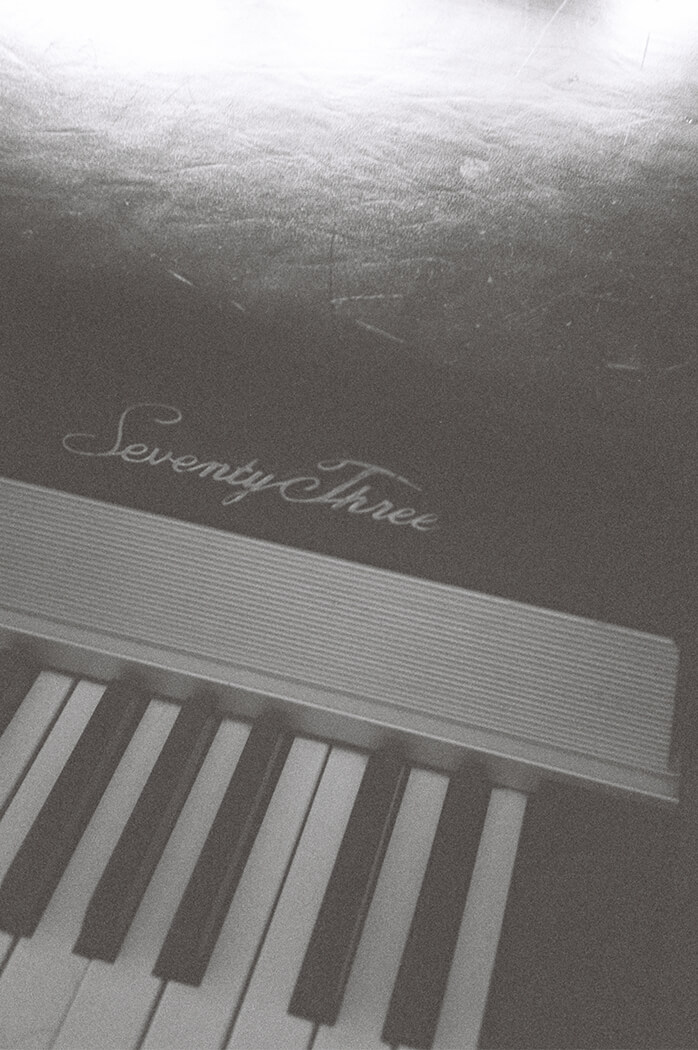
What is your top piece of production advice?
I would recommend the classic crate-digging route for everyone who wants to get into hip-hop production. I’ve learned so much from picking up records, reading the liner notes, credits and instruments used. You get deep respect for the musicians, the music and the medium it’s released on. I also recommend reading books about the music you want to make and make sure you’re paying respect to the people – largely African-American – who laid the foundation for what we do.
What is the one piece of advice you would give someone starting out building a studio?
Based on my own experience, I would recommend building a studio using the combination of hardware and software, analogue and digital. Run something through a tape recorder or an old mixer just to hear how that affects your sound. Now that everything you need is available as a VST, I think it’s still really good for creativity to do some of the work with hardware. And it always sounds better to get some of the texture, warmth, dust, air and soul of the real world that analogue recordings and analogue equipment can offer.
Lastly, what will be the first thing you do once lockdown is lifted?
I really miss going to concerts and festivals, but most of all I’m looking forward to visiting my family again.
Listen to Ol’ Burger Beats at bandcamp.com.
Do you use a studio that we all need to see? Send photos to editors@musictech.net or get in touch via the MusicTech Facebook page and your gear could be featured next.
For more studio posts, check out our Studio page.
